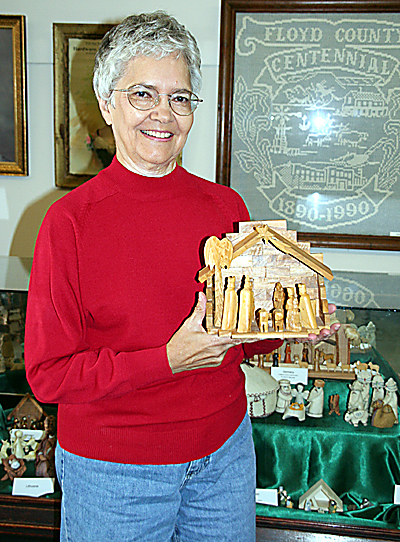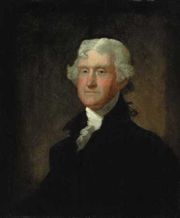Thomas Bouldinge arrived in Elizabeth City, Virginia on the ship Swan in 1610. The colony of Jamestown was established in 1607 and became the first permanent English settlement in America. The winter of 1609-1610 in Jamestown is known as the “starving time.” Over half of Jamestown’s settlers died waiting for supplies; supply ships were delayed. The area occupied by the colony was mosquito-infested, and the brackish water of the James River was no good for drinking. Native Americans were rightfully inhospitable to the colonists, as well. Many historians believe Jamestown’s high mortality rate can partially be blamed on poor planning. The colonists expected to trade with the locals for their food between supply ships and threw most of their cultivating energies into growing tobacco. By 1611, most of the Jamestown settlers had died. The colony’s prospects for survival looked bleak until 1617, when the colony’s tobacco exports finally generated enough income to keep the colony going.
Very little is actually known about Thomas Bouldinge. He is accepted as one of the “Ancient Planters” of America. The Order of Descendants of Ancient Planters, much like the Mayflower Society, is a genealogy society whose members trace their lineage to early American settlers. In the case of the Ancient Planters, members must prove lineage from a settler who emigrated to America prior to 1616, paid their own passage, and survived the massacre of Jamestown in 1622 (i.e., lived at least three years after the attack). Thomas Bouldinge was 40 when he emigrated to America. He may have come to Virginia with a wave of immigrant farmers in order to cultivate the land for the purpose of growing food for the fledgling colony. He married a woman named Mary, whose name is often spelled “Bouldin.” Herein lies one of the major problems that descendants of this family have in tracing their lineage: the name has a multitude of spelling variations, and it would seem our ancestors themselves were not terribly picky about how they spelled it. Some variations on the spelling include Bouldin, Bolton, Bolding, Bolden, Bolling, Bowling, Bollin, Boulding, and Bouldinge.
Another problem with researching this line is that overzealous genealogists in the past have created outright fiction in order to establish family connections to Pocahontas. If I might be granted a moment’s indulgence, I have rarely come across any other historical figure that so many people wanted to claim as an ancestor. It is true that many Bollings may trace their ancestry to Pocahontas, whose granddaughter Jane Rolfe married Robert Bolling. However, Robert Bolling arrived in Virginia in 1660. If he is related to Thomas Bouldinge, it is distantly; therefore, Thomas Bouldinge’s descendants most likely cannot claim Pocahontas as an ancestor (unless they descend through some other line in their families as well). I have examined the problem of the Blue Bollings in another post.
Inconsistency with name spellings and shoddy research done by genealogists more concerned with documenting wishful thinking than actual facts are not the only problems I have encountered in researching this line. I have made the acquaintance of two distant cousins, Larry Bowling and Joe Bowling. Their collective research has traced the Bowling lineage back to three brothers — Alexander, William, and Thomas Bowling, who lived in West Tennessee in the early 1800’s. My ancestor is William Bowling (1784-1870), who is the great-grandfather of Stella Ophelia Bowling — my great-great grandmother. If you are doing math, you have probably wondered how I can possibly maintain a connection to Thomas Bouldinge through a descendancy from William Bowling.
My connection to Thomas Bouldinge cannot yet be proven through historical documentation, but it can be proven through science. Larry Bowling and Joe Bowling participated in the Bolling Family Association DNA Study in 2001. Their DNA results were compared with those of a known, documented descendant of Thomas Bouldinge. Larry summarized the conclusions of the study:
Several descendants of Alexander, one of William and one of Thomas participated in the study. They all matched exactly using the 12 loci y-chromosome test conducted by Family Tree DNA and the Univ. Of Arizona. This proves that they all shared a common Bowling ancestor and proves the relationship of these three men when combined with other evidence. In 2002, John Bouldin, a documented descendant of Thomas Bouldinge 1580-1655, Fh665, who immigrated to America in 1610 on the Swan, also took the DNA test and matched my group 12 of 12. This test was expanded to the 25 allele test and compared with mine. We, again, matched exactly 25 of 25, proving that we share a common Bouldin/Bowling ancestor within 23 generations with a 90% confidence and 7 generations at 50%. Another desc. of Thomas Bouldinge 1580 has also matched this group. Thus it would appear, based upon the DNA evidence collected thus far, that Alexander, William and Thomas are descendants of Thomas Bouldinge 1580-1655 through an as yet undiscovered branch of his tree.
Because my relationship through the Bowling line to both Joe Bowling and Larry Bowling can be established through historical documentation, and their relationship to Thomas Bouldinge can be established through scientific documentation, it follows that I also have a relationship to Thomas Bouldinge.
My husband has Bolton relatives through his father’s mother, and my mother’s maternal aunt Winnie married Arvel Bolding. Despite the different spellings, these family members might find connections to Thomas Bouldinge (or other known Bolling branches) if they are willing to participate in the Bolling Family Association’s DNA test. Participants must be male, as it is a Y-chromosome study.
Thus, I can say my earliest immigrant ancestor in my Bowling line would seem to be Thomas Bouldinge, though I cannot trace my own Bowling ancestors past my ggggg-grandfather William Bowling. My ancestry to William Bowling is as follows:
Dana Michelle Swier
+ Patti Jo Cunningham
++ Udell Oliver Cunningham
+++ Herman Cunningham (1895-1980)
++++ Stella Ophelia Bowling (1867-1938)
+++++ William Jones Bowling (1840-1916)
++++++ Burgess Bowling (Abt. 1819-Bef. 1845)
+++++++ William Bowling (1784-1870)
This post is the fifth in a series about my known immigrant ancestors.


